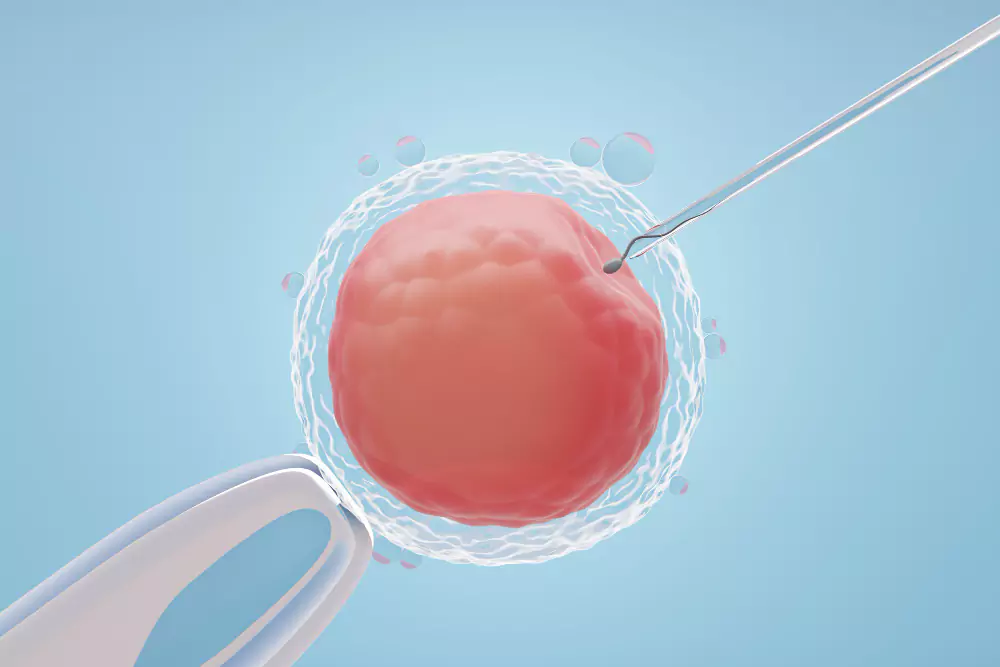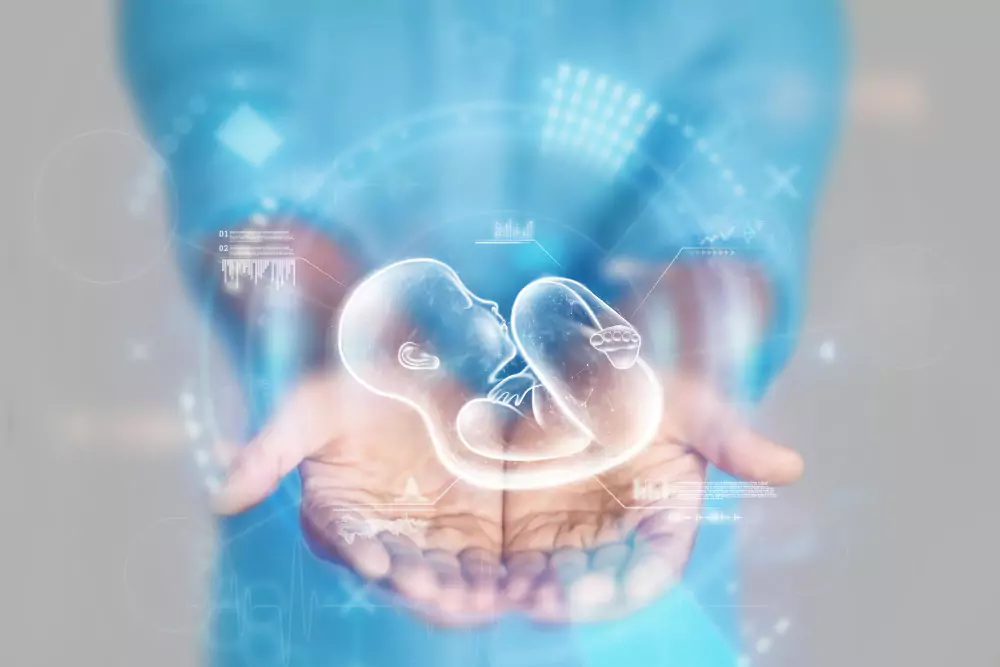- +91-9224199672
- drpanchdevg@yahoo.com
- Kalyan West, Maharashtra

Overview of IVF (In Vitro Fertilization)
IVF, or In Vitro Fertilization, is an advanced form of assisted reproductive technology (ART) used to help individuals and couples conceive when natural conception isn’t possible or has failed. The process involves retrieving eggs from the ovaries, fertilizing them with sperm in a lab (“in vitro” means “in glass”), and then transferring the embryo into the uterus to achieve pregnancy.
IVF is commonly used for:
Women with blocked or damaged fallopian tubes
Women with ovulation disorders
Endometriosis
Male infertility (low sperm count or motility issues)
Unexplained infertility
Women of advanced reproductive age
Couples with genetic disorders wanting to avoid transmission
Individuals seeking fertility preservation (e.g., cancer patients)
Same-sex couples or single parents using donor sperm or eggs
Ovarian Stimulation
Hormonal medications are given to stimulate the ovaries to produce multiple eggs.
Egg Retrieval (Ovum Pick-Up)
Once eggs mature, they are retrieved from the ovaries through a minor procedure under ultrasound guidance.
Sperm Collection & Preparation
A semen sample is collected, and healthy sperm are isolated.
Fertilization in Lab
Eggs are fertilized with sperm in the lab (either conventional mixing or via ICSI – Intracytoplasmic Sperm Injection).
Embryo Development
The fertilized eggs develop into embryos over 3–5 days in a culture medium.
Embryo Transfer
One or more embryos are transferred into the woman’s uterus. This is a painless and quick procedure.
Pregnancy Test
About 10–14 days after embryo transfer, a blood test is done to check for pregnancy.
IVF success depends on age, egg and sperm quality, and overall reproductive health.
Women under 35 often have the best success rates (40–50% per cycle).
Success declines with increasing age, especially after 40.
Multiple pregnancies (twins/triplets)
Ovarian Hyperstimulation Syndrome (OHSS)
Emotional and financial stress
Small risk of ectopic pregnancy or miscarriage
Frozen Embryo Transfer (FET)
Donor Eggs/Sperm
PGT (Preimplantation Genetic Testing)
Surrogacy
Minimal or Natural Cycle IVF

🧬 Why is IVF Done?
IVF is primarily done to help individuals or couples overcome infertility or genetic problems and conceive a healthy baby. It is a cornerstone of assisted reproductive technology (ART) and is considered when other fertility treatments have failed or are unlikely to succeed.
IVF is commonly done when a woman has any of the following issues:
Natural fertilization occurs in the fallopian tubes. If they are blocked, IVF bypasses this by fertilizing the egg outside the body.
Conditions like PCOS (Polycystic Ovary Syndrome) or hormonal imbalances may prevent regular ovulation, making natural conception difficult.
Endometrial tissue outside the uterus can affect egg quality and block the fallopian tubes. IVF can help bypass these issues.
In women with a low number or poor quality of eggs, IVF allows the collection of multiple eggs in one cycle to increase chances of success.
IVF is also used when the male partner has:
Low sperm count
Poor sperm motility
Abnormal sperm morphology
Azoospermia (absence of sperm in semen)
In such cases, ICSI (Intracytoplasmic Sperm Injection) is used during IVF, where a single sperm is injected into each egg.
When all tests (ovulation, semen analysis, tubes, hormones) are normal but conception doesn’t happen after a year or more of trying, IVF is often the best option.
Couples who are at risk of passing on genetic disorders (e.g., thalassemia, cystic fibrosis) can undergo Preimplantation Genetic Testing (PGT) during IVF.
This allows only genetically healthy embryos to be transferred into the uterus.
Women can freeze their eggs or embryos before starting treatment that may harm fertility.
Women who wish to delay childbearing due to career, education, or personal reasons may freeze eggs for future IVF use.
IVF is the next step if other treatments like:
Ovulation induction
Intrauterine Insemination (IUI)
Laparoscopic surgery haven’t worked.
Donor egg/sperm: In cases where one partner lacks viable eggs or sperm.
Gestational surrogacy: If the woman has a health condition that makes pregnancy risky (e.g., uterus removal, recurrent miscarriages), IVF embryos are implanted in a surrogate.
IVF enables family building for:
Same-sex female couples (using donor sperm)
Same-sex male couples (using donor egg and surrogate)
Single women or men who wish to become parents
| Reason | Description |
|---|---|
| Tubal Blockage | IVF bypasses the fallopian tubes |
| Ovulation Disorders | Overcomes irregular ovulation |
| Male Factor Infertility | Helps fertilize egg with ICSI |
| Unexplained Infertility | Offers a controlled and monitored conception |
| Genetic Concerns | Enables selection of healthy embryos |
| Fertility Preservation | Freezing eggs/embryos for future use |
| Failed Other Treatments | IVF becomes the next-line therapy |
| Donor Use or Surrogacy | Helps those unable to conceive or carry a pregnancy |
| LGBTQ+ or Single Parenting | Enables parenthood with donor/surrogate help |
IVF is not just a treatment — for many, it is the only pathway to biological parenthood, offering hope where natural methods have failed or are impossible.

Goal: Understand the cause of infertility and evaluate the couple’s reproductive health.
Includes:
Hormonal blood tests (AMH, FSH, LH, TSH, prolactin, etc.)
Transvaginal ultrasound to assess ovaries and uterus
Semen analysis
Medical history and physical examination
Discussion about expectations, timelines, costs
Goal: Stimulate the ovaries to produce multiple mature eggs (instead of the usual one).
How it’s done:
Daily hormone injections (FSH, LH)
Regular ultrasounds and blood tests to monitor follicle growth
Medications used:
Gonadotropins (e.g., Gonal-F, Menopur)
GnRH antagonists or agonists to prevent premature ovulation
Goal: Trigger final egg maturation before egg retrieval.
When follicles reach 18–20 mm, a trigger shot (e.g., hCG or GnRH agonist) is given.
Egg retrieval is scheduled exactly 34–36 hours later.
Procedure: Minor surgical procedure done under light anesthesia.
How: A needle is guided through the vaginal wall to aspirate fluid from follicles in the ovaries.
Duration: 20–30 minutes
Outcome: 5–20+ eggs are typically retrieved
On the same day as egg retrieval, sperm is collected from the male partner (or a donor).
Semen is washed and processed to extract the healthiest and most motile sperm.
There are two methods:
Conventional IVF: Eggs and sperm are mixed in a petri dish and allowed to fertilize naturally.
ICSI (Intracytoplasmic Sperm Injection): A single sperm is injected directly into each mature egg (used in cases of male infertility).
Fertilized eggs are monitored as they divide and grow in a lab.
By Day 3, embryos reach 6–8 cell stage.
By Day 5, they develop into a blastocyst (more advanced and viable for implantation).
Embryos can be biopsied at the blastocyst stage and tested for genetic or chromosomal abnormalities.
This helps select the healthiest embryos for transfer.
Usually done on Day 3 or Day 5 after fertilization.
A selected embryo is transferred into the uterus using a thin catheter.
Painless, outpatient procedure, no anesthesia needed.
Remaining embryos can be frozen for future use (FET).
Progesterone supplements (injections or vaginal gels) are given daily to support the uterine lining and aid implantation.
10–14 days after embryo transfer, a blood test (β-hCG) is done to confirm pregnancy.
If positive, early ultrasounds are scheduled to confirm the heartbeat.
| Step | Description | Duration |
|---|---|---|
| 1. Fertility Evaluation | Tests and planning | 1–2 weeks |
| 2. Ovarian Stimulation | Hormone injections, monitoring | 10–12 days |
| 3. Egg Retrieval | Minor procedure under sedation | 1 day |
| 4. Sperm Collection | Same day as retrieval | 1 day |
| 5. Fertilization | Conventional or ICSI | 1 day |
| 6. Embryo Development | Monitoring embryos | 3–5 days |
| 7. Embryo Transfer | Transfer selected embryo | 1 day |
| 8. Pregnancy Test | Blood test for hCG | After 10–14 days |

Where Science Meets Compassion in Fertility Care
Choosing the right IVF centre is one of the most important decisions for couples or individuals seeking fertility treatment. Niraj IVF stands out as a trusted destination for personalized, ethical, and advanced fertility care.
Equipped with world-class infrastructure, including modern embryology labs, ICSI, laser-assisted hatching, and blastocyst culture facilities.
Use of cutting-edge techniques like Preimplantation Genetic Testing (PGT) and Time-Lapse Embryo Monitoring to enhance success rates.
Adherence to international standards for temperature, air quality, and sterility in IVF labs.
Led by a team of nationally recognized doctors with years of experience in treating complex infertility cases.
Personalized attention from consultation to pregnancy care.
Expertise in treating:
PCOS
Endometriosis
Male infertility
Recurrent pregnancy loss
Advanced maternal age
Transparent and consistently high clinical pregnancy and live birth rates.
Evidence-based treatment protocols.
Strong focus on quality embryos and personalized embryo transfer strategies.
Clear communication about treatment options, pricing, and expectations.
No hidden costs or unnecessary procedures.
Compassionate counseling provided throughout the journey.
Ovulation Induction & IUI
IVF / ICSI
Frozen Embryo Transfer (FET)
Donor Egg/Sperm Programs
Surrogacy
Fertility preservation (egg, sperm, embryo freezing)
Genetic testing for inherited disorders
On-site advanced ultrasound, hormone testing, semen analysis, and genetic labs ensure quicker results and smoother treatment.
Emotional and psychological support for couples throughout the journey.
Nutritional counseling and wellness guidance.
Stress-reduction strategies including yoga and meditation (if available).
Centrally located and easily reachable.
Modern clinic with a warm, welcoming atmosphere.
Minimal waiting times and patient-centric scheduling.
Inclusive care for:
Heterosexual couples
Single parents
LGBTQ+ individuals/couples
Guidance with legal aspects of surrogacy and donor treatments, if needed.
Hundreds of happy families created.
Positive word-of-mouth and glowing reviews from former patients.
Many success stories even after failed IVF cycles elsewhere.
| Feature | What It Means for You |
|---|---|
| Experienced Specialists | Trusted hands, high expertise |
| Modern Lab Technology | Better embryo quality and outcomes |
| Personalized Treatment Plans | Focused on your unique fertility journey |
| Transparent Pricing | No surprises, just ethical care |
| Comprehensive Services | One-stop solution for all fertility needs |
| High Success Rates | More chances of bringing home a baby |

Niraj IVF & Laparoscopy Centre specializes in fertility treatments, including IVF, ICSI, PRP, and laparoscopic surgeries. With cutting-edge technology and personalized care, we help couples overcome infertility challenges and achieve their dream of parenthood.